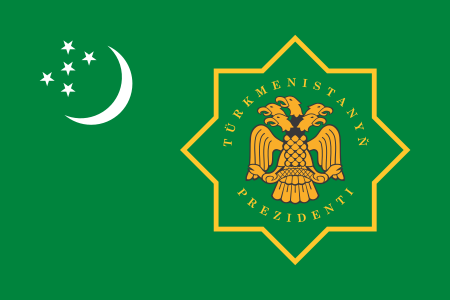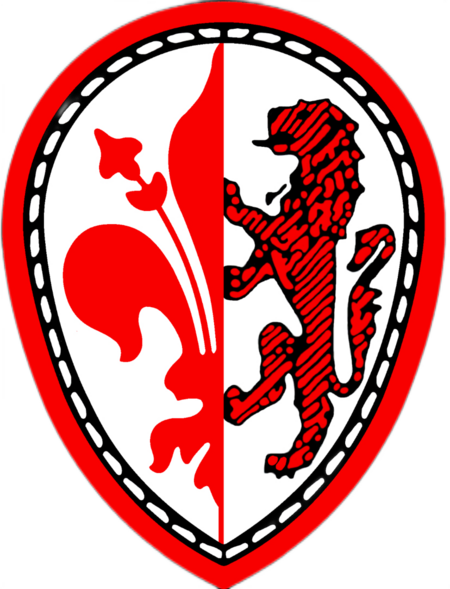Kingdom of Abkhazia
| ||||||||||||||||||||||||||||||||||||||||||||||||||||||||||||||||||||||||||||||||||||||||||||||||||||||||||
Read other articles:

Legio XII Fulminata Carte de l'Empire romain en 125, sous l'empereur Hadrien, montrant la Legio XII Fulminata, stationné à Mélitène (aujourd'hui Malatya en Turquie), dans la province de Cappadoce, de 71 jusqu'au IVe siècle Création 58 av. J.-C. Dissolution Ve siècle Pays République romaine et Empire romain Type Légion romaine Rôle Infanterie lourde et contingent de cavalerie légère Effectif 5 120 légionnaires et 120 jinetes (effectifs théoriques), soit 5 240 Gar…

Sway Tipemanajer jendela menyusun, Wayland compositor dan perangkat lunak bebas Berdasarkai3 Versi pertama24 Maret 2016; 8 tahun lalu (2016-03-24)[1]Versi stabil 1.9 (24 Februari 2024) GenreManajer jendelaLisensiLisensi MITKarakteristik teknisSistem operasiGNU/Linux, BSD dan mirip Unix Ukuran5.3 MiBBahasa pemrogramanC Informasi pengembangPembuatDrew DeVault (SirCmpwn)ProgrammerDrew DeVault Sumber kode Kode sumberPranala Arch Linuxsway Ubuntusway Gentoogui-wm/sway Fedorasway Informas…

Spanish singer (born 1975) For the album, see Enrique Iglesias (album). In this Spanish name, the first or paternal surname is Iglesias and the second or maternal family name is Preysler. Enrique IglesiasIglesias at the Euphoria World Tour in 2011BornEnrique Miguel Iglesias Preysler (1975-05-08) 8 May 1975 (age 49)Madrid, SpainEducationGulliver Preparatory SchoolUniversity of MiamiOccupationsSingersongwriterrecord producercomposeractorYears active1995–presentWorksDiscographyP…

普密蓬·阿杜德ภูมิพลอดุลยเดช泰国先王普密蓬·阿杜德(官方肖像) 泰國國王統治1946年6月9日-2016年10月13日(70年126天)加冕1950年5月5日前任阿南塔玛希敦繼任玛哈·哇集拉隆功总理见列表出生(1927-12-05)1927年12月5日 美國马萨诸塞州剑桥奥本山醫院(英语:Mount Auburn Hospital)逝世2016年10月13日(2016歲—10—13)(88歲) 泰國曼谷西里拉醫院安葬曼谷僧王�…

This article needs additional citations for verification. Please help improve this article by adding citations to reliable sources. Unsourced material may be challenged and removed.Find sources: Ecco Jr. – news · newspapers · books · scholar · JSTOR (December 2009) (Learn how and when to remove this message) 1995 video gameEcco Jr.Developer(s)Appaloosa InteractivePublisher(s)SegaProducer(s)E. Ettore AnnunziataMarianne ArotzarenaProgrammer(s)József Báns�…

本條目存在以下問題,請協助改善本條目或在討論頁針對議題發表看法。 此條目的引用需要清理,使其符合格式。参考文献应符合正确的引用、脚注及外部链接格式。 此條目可参照英語維基百科相應條目来扩充,此條目在對應語言版為高品質條目。 (2023年8月17日)若您熟悉来源语言和主题,请协助参考外语维基百科扩充条目。请勿直接提交机械翻译,也不要翻译不可靠、低品�…

土库曼斯坦总统土库曼斯坦国徽土库曼斯坦总统旗現任谢尔达尔·别尔德穆哈梅多夫自2022年3月19日官邸阿什哈巴德总统府(Oguzkhan Presidential Palace)機關所在地阿什哈巴德任命者直接选举任期7年,可连选连任首任萨帕尔穆拉特·尼亚佐夫设立1991年10月27日 土库曼斯坦土库曼斯坦政府与政治 国家政府 土库曼斯坦宪法 国旗 国徽 国歌 立法機關(英语:National Council of Turkmenistan) 土�…

土库曼斯坦总统土库曼斯坦国徽土库曼斯坦总统旗現任谢尔达尔·别尔德穆哈梅多夫自2022年3月19日官邸阿什哈巴德总统府(Oguzkhan Presidential Palace)機關所在地阿什哈巴德任命者直接选举任期7年,可连选连任首任萨帕尔穆拉特·尼亚佐夫设立1991年10月27日 土库曼斯坦土库曼斯坦政府与政治 国家政府 土库曼斯坦宪法 国旗 国徽 国歌 立法機關(英语:National Council of Turkmenistan) 土�…

Haft Tepe{{{1}}}Shown within IranAlternative nameKabnakLocationKhuzestan Province, IranCoordinates32°04′44″N 48°19′35″E / 32.07889°N 48.32639°E / 32.07889; 48.32639TypeSettlementHistoryCulturesElamiteSite notesExcavation dates1908, 1965-1979, 2003-2013ArchaeologistsJacques de Morgan, Ezzat Negahban, Behzad MofidiConditionIn ruins Haft Tepe (also Haft Tape) is an archaeological site situated in the Khuzestan Province in south-western Iran, about 15 ki…

Citra satelit yang menunjukkan pergerakan hurricane mendekati pantai timur Amerika Serikat. Bagian dari seri alamCuaca Musim kalender Dingin Semi Panas Gugur Musim tropis Kemarau Harmattan Hujan Badai Awan Awan kumulonimbus Awan arcus Angin kencang Microburst Heat burst Derecho Petir Badai petir Badai petir massa udara Salju petir Badai petir kering Mesosiklon Supercell Tornado Tornado antisiklon Landspout Sengkayan Puting beliung Pusaran api Antisiklon Siklon Tekanan rendah kutub Siklon ekstrat…

Paropamisades (bahasa Yunani Kuno: Παροπαμισάδες) atau Paropamisádai (Παροπαμισάδαι), adalah kegubernuran di bawah kekuasaan Aleksander yang terletak di Afghanistan dan Pakistan modern, yang sebagian besar mencakup provinsi Parupraesanna pada zaman Kekaisaran Akhemeniyah. Kegubernuran ini terdiri dari wilayah Sattagydia, Gandhara, Buner, dan Oddiyana.[1] Paruparaesanna disebut dalam versi bahasa Akkadia dan Elam pada Prasasti Behistun yang ditulis oleh Dari…

يفتقر محتوى هذه المقالة إلى الاستشهاد بمصادر. فضلاً، ساهم في تطوير هذه المقالة من خلال إضافة مصادر موثوق بها. أي معلومات غير موثقة يمكن التشكيك بها وإزالتها. (مارس 2016) عملية المناظير جزء من ثورة التحرير الجزائرية التاريخ وسيط property غير متوفر. بداية يوليو 1959 نهاية مارس…

French historian, Indologist, and musicologist (1907–1994) Alain DaniélouBorn(1907-10-04)October 4, 1907Neuilly-sur-Seine, FranceDiedJanuary 27, 1994(1994-01-27) (aged 86)Lonay, SwitzerlandOccupationHistorian, Indologist, musicologist, translator, writerNationalityFrenchSubjectCulture of India, Hindu studies, Indian classical music, Indian philosophy, Shaivite HinduismNotable works Introduction to the Study of Musical Scales (1943)[1] The Myths and Gods of India: The Classic Work…

British metalcore band Bury TomorrowBury Tomorrow performing at With Full Force in 2019Background informationOriginSouthampton, Hampshire, EnglandGenres Metalcore melodic metalcore post-hardcore Years active2006–presentLabels Basick Artery Razor & Tie Nuclear Blast Sony Music Music For Nations Members Daniel Winter-Bates Davyd Winter-Bates Adam Jackson Kristan Dawson Ed Hartwell Tom Prendergast Past members Mehdi Vismara Jason Cameron Websitebury-tomorrow.com Bury Tomorrow are a British me…

Disambiguazione – Se stai cercando altri significati, vedi Rho (disambigua). Rhocomune Rho – VedutaLa Basilica di San Vittore LocalizzazioneStato Italia Regione Lombardia Città metropolitana Milano AmministrazioneSindacoAndrea Orlandi (PD) dal 7-10-2021 TerritorioCoordinate45°32′N 9°02′E45°32′N, 9°02′E (Rho) Altitudine158 m s.l.m. Superficie22,24 km² Abitanti50 598[2] (31-10-2023) Densità2 275,09 ab./km² FrazioniLuce…

College football national championship game This article is about the FBS (Division I-A) championship game. For the FCS (Division I-AA) championship game, see 2022 NCAA Division I Football Championship Game. College football game2022 College Football Playoff National Championship presented by AT&T8th College Football Playoff National Championship Georgia Bulldogs Alabama Crimson Tide (13–1) (13–1) SEC SEC 33 18 Head coach: Kirby Smart Head coach: Nick Saban APCoachesC…

Questa voce o sezione sull'argomento società calcistiche italiane non cita le fonti necessarie o quelle presenti sono insufficienti. Puoi migliorare questa voce aggiungendo citazioni da fonti attendibili secondo le linee guida sull'uso delle fonti. ASD Fortis Juventus 1909Calcio Biancoverdi, la Fortis, i' Borgo Segni distintiviUniformi di gara Casa Trasferta Colori sociali Bianco, verde Dati societariCittàBorgo San Lorenzo Nazione Italia ConfederazioneUEFA Federazione FIGC Campionato…

Guidance and navigation computer used in Apollo spacecraft Apollo Guidance ComputerApollo Guidance Computer and DSKYInvented byCharles Stark Draper LaboratoryManufacturerRaytheonIntroducedAugust 1966; 57 years ago (1966-08)DiscontinuedJuly 1975; 48 years ago (1975-07)TypeAvionicsGuidance computerProcessorDiscrete silicon integrated circuit (IC) chips (RTL based)Frequency2.048 MHzMemory15-bit wordlength + 1-bit parity2048 words RAM (magnetic-core memo…

لمعانٍ أخرى، طالع البرود (توضيح). يفتقر محتوى هذه المقالة إلى الاستشهاد بمصادر. فضلاً، ساهم في تطوير هذه المقالة من خلال إضافة مصادر موثوق بها. أي معلومات غير موثقة يمكن التشكيك بها وإزالتها. (ديسمبر 2018) مركز البرود البرود (محافظة الأسياح) البرود (محافظة الأسياح) تاريخ ا�…

Chaudhary Bansi Lal UniversityMottoविद्या गुरूणां गुरूः (Sanskrit)TypeState university, PostgraduateEstablished2014 (2014)ChancellorGovernor of HaryanaVice-ChancellorProf. Deepti DharmaniLocationBhiwani, Haryana, 127021, India28°47′57″N 76°08′01″E / 28.799045°N 76.133511°E / 28.799045; 76.133511LanguageEnglish & HindiWebsitehttps://cblu.ac.in/ Chaudhary Bansi Lal University (CBLU) is a state university in the city o…














